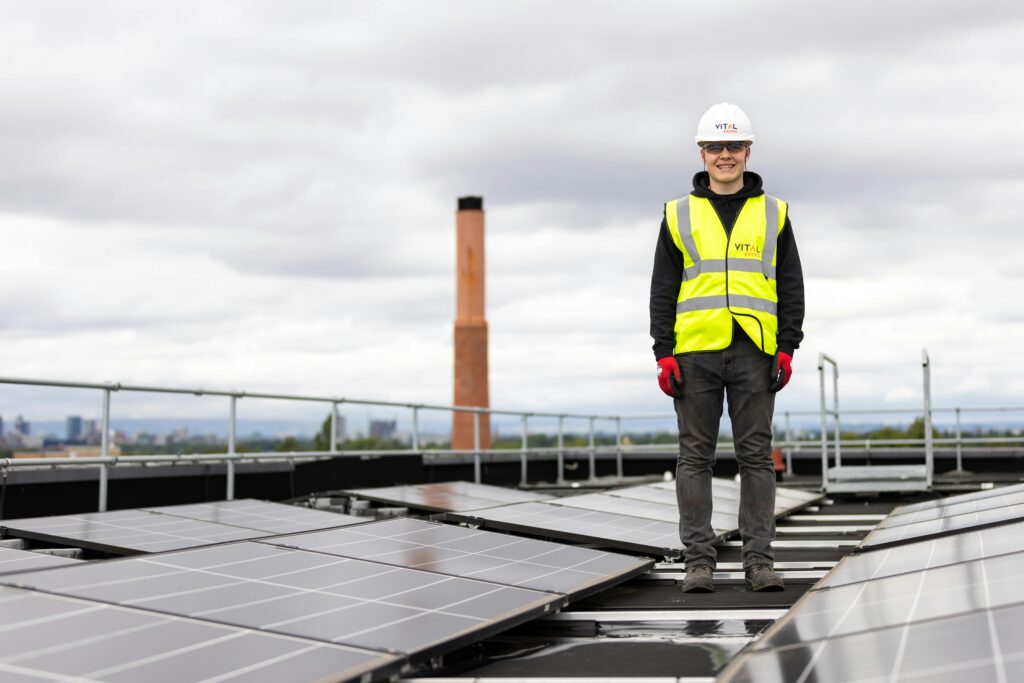Climate change is something that is important in the world today, and it is something more taken seriously in industries, but sustainability energy solutions have become important in houses too. Anyone can make slight changes and hence help in creating a greener planet. Here are some sustainable energy hacks that minimize energy consumption, reduce carbon footprints, and at the same time, save one some pennies.

1. Energy Efficiency in Lighting through LED Bulbs
Perhaps one of the easiest ways to make a home energy-efficient is by adopting LED bulbs. Unlike incandescent bulbs, LED lights consume about 75% less energy and last up to 25 times longer. According to the U.S. Department of Energy, if all American households replaced just one incandescent bulb with an ENERGY STAR-certified LED, annual savings could reach over $700 million in energy costs and reduce greenhouse gas emissions equivalent to taking 800,000 cars off the road. LEDs lose only a negligible amount of energy as heat, meaning less air-conditioned cooling in warm climates.
2. Invest in Smart Thermostats
This is particularly applicable to heating and cooling, which account for roughly half the energy expenditure of an average house. So it is a high-priority site for saving energy. In this regard, the usable feature of smart thermostats is demonstrated through a capability to control the temperature of a home from a distance. Such a device can rapidly learn individual schedules and thereby adjust temperatures in line with this, once the house is unoccupied, in order to maximize energy use. According to Nest research, the leading smart thermostat provider, using a smart thermostat could cut households’ heating costs by as much as 10-12% or their cooling costs by 15%. This translates into a saving of around $131-$145 per year.

3. Solar Chargers for Small Devices
Solar power installation is not just restricted to big installations. Such devices are available in the market and can be purchased for private use to charge smaller devices. They power small devices like phones and tablets as well, removing some dependence on the electric grid. Of course, this savings in power consumed traditionally may not stand very tall from one person’s view, but it adds up to this. The smartphone industry alone, for instance, consumes 125 megatons of carbon dioxide every year because of electricity consumption. Once people rely on solar charging, the footprint may be lowered.
4. Installing Low Flow Fixtures
Saving water has a proportional effect on energy as less water means lesser amount of heating required for water. Installing low-flow showerheads and faucets can also assist in saving at least 30% of the water usage that will limit the amounts of water that need to be heated. For example, the Environmental Protection Agency estimates that if all houses in the United States utilized Water Sense labeled showerheads, it may help save up to 330 billion gallons of water along with $2.6 billion in annual energy costs.
5. Unplug Apparatus not being Used
Many appliances and electronics still consume a small amount of power even when switched off, which is commonly called “phantom” or “vampire” power. Sometimes, standby power consumption accounts for as much as 5-10% of the energy consumed in a household, said the Lawrence Berkeley National Laboratory. Considering the elimination of such “energy vampires” among other measures helps significantly reduce overall consumption.
6. Take Advantage of Daylight and Insulation
Another too-often-overlooked hack is the use of natural lighting and enhanced insulation. By opening a window or lifting some blinds/curtains during the daytime, it’s easy to save on artificial lighting. Good insulation keeps warmth indoors during the winter months and cool air indoors in the summer, so you use much less energy for heating and cooling. A well-insulated house saves up to 20 percent in annual heating and cooling costs, says the Department of Energy.

Conclusion
Adopting sustainable energy hacks as a viable method of cutting down on energy bills as well as contributing toward environmental sustainability is a most powerful step. These little adjustments in daily routines, alongside some minor upgrades to home infrastructure, make a gigantic difference. Optimizing the level of lighting, utilization of smart thermostat, solar chargers, paying attention to consumption and usage of water, and energy are in themselves ways in which any one of us could be part of building a more sustainable future. Together, all these steps ensure not only personal savings but also for aggregation, a collective saving on the use of energy and good for the whole earth.



